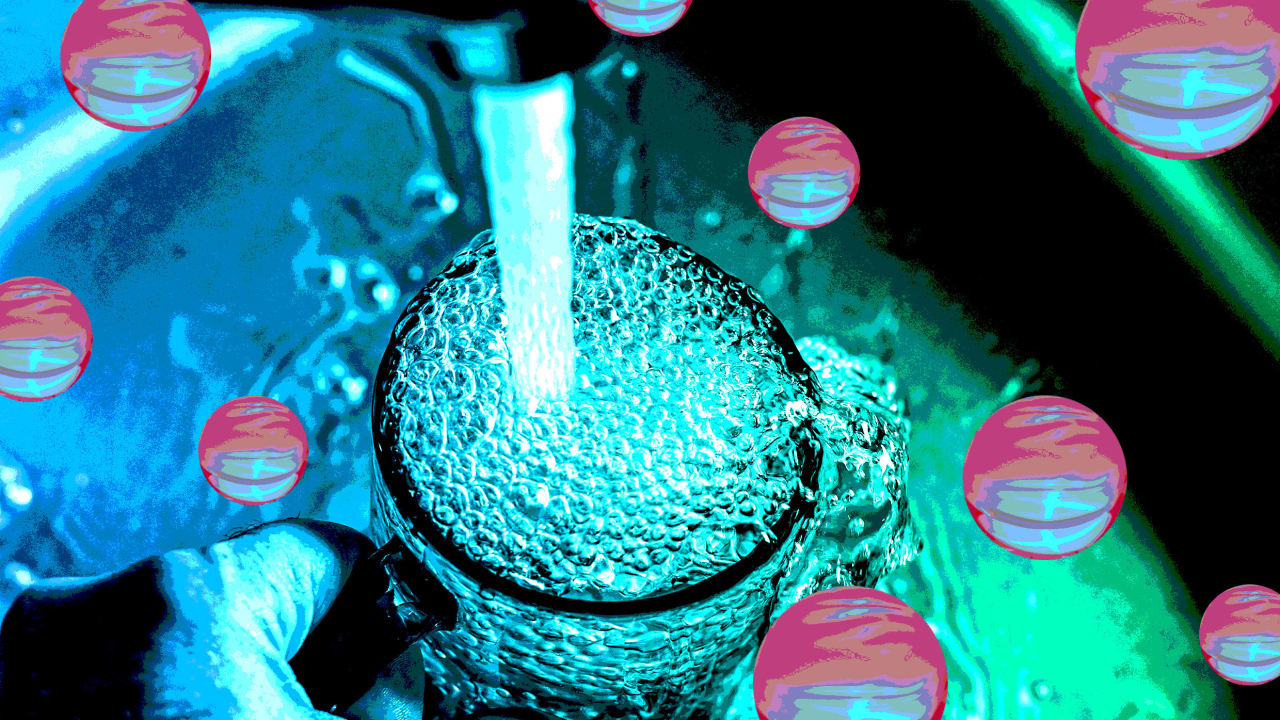Forever Chemicals In US Tap Water: A Public Health Crisis?

Table of Contents
The Dangers of PFAS Exposure
The insidious nature of PFAS lies in their persistence in the environment and their ability to accumulate in our bodies over time. Even low levels of exposure can pose significant health risks.
Health Effects of Forever Chemicals
The known and potential health impacts of PFAS exposure are alarming and extensive. Studies have linked PFAS to:
- Liver cancer: Increased risk of liver cancer and other liver diseases.
- Thyroid disorders: Disruptions in thyroid hormone levels, leading to various health issues.
- Immune deficiency: Weakening of the immune system, making individuals more susceptible to infections.
- Developmental issues in children: Adverse effects on fetal development, birth weight, and immune function in children.
- Infertility: Reduced fertility in both men and women.
These are just some of the documented health problems associated with PFAS. Ongoing research continues to uncover further potential health consequences.
Sources of PFAS Contamination
PFAS contamination in US water supplies stems from various sources:
- Industrial discharge: Manufacturing facilities that use PFAS-containing products release these chemicals into the environment.
- Military firefighting foam: A significant source of PFAS contamination, particularly near military bases and airports.
- Non-stick cookware: PFAS-coated cookware can leach PFAS into food and water.
- Food packaging: Some food packaging materials contain PFAS, which can migrate into food and subsequently into our bodies.
The widespread use of PFAS-containing products over decades has resulted in pervasive contamination. High levels of PFAS have been detected in many areas across the US, including:
- New Hampshire: Communities near Pease Air National Guard Base have experienced significant PFAS contamination.
- Michigan: Several areas in Michigan have been affected by PFAS contamination from industrial sources.
- North Carolina: The Cape Fear River Basin has experienced widespread PFAS contamination due to industrial discharges.
These are just a few examples; many other communities face similar challenges.
The Current Regulatory Landscape
Addressing the PFAS contamination crisis requires robust regulation and effective remediation strategies. However, the current regulatory landscape falls significantly short.
Lack of Federal Regulations
The lack of strong federal regulations on PFAS levels in drinking water is a major impediment to protecting public health. While the EPA has issued health advisories, these are not legally binding mandates. The inconsistencies in state regulations further complicate matters, leaving many communities vulnerable.
Challenges in Testing and Remediation
Testing for PFAS is complex and expensive, requiring specialized equipment and expertise. Furthermore, effectively remediating contaminated water sources is a significant undertaking, often requiring costly and technologically advanced solutions. The high costs associated with testing and remediation disproportionately affect low-income communities.
The following legislative efforts are underway:
- The PFAS Action Act of 2021 aimed to designate PFAS as hazardous substances, but it has not yet been fully enacted.
- Several states have enacted their own regulations, but these vary significantly in stringency and scope.
Protecting Yourself from Forever Chemicals
While regulatory action is crucial, individuals can take steps to protect themselves from PFAS exposure.
Testing Your Water
The first step is to have your tap water tested for PFAS. Many private labs offer such services. If contamination is detected, you will need to determine the extent of the contamination and decide on appropriate mitigation strategies.
Water Filtration Options
Several effective water filtration methods can remove PFAS from drinking water:
- Reverse osmosis (RO) systems: Highly effective at removing PFAS, but they can be expensive and produce wastewater.
- Granular activated carbon (GAC) filters: Less expensive than RO systems, but their effectiveness varies depending on the type of PFAS and the filter's design.
It's essential to choose a filter specifically designed to remove PFAS.
Advocating for Change
Individuals can exert significant influence by advocating for stronger regulations and increased funding for research and remediation. Contact your elected officials, participate in public forums, and support organizations working to address this issue.
- Environmental Working Group (EWG): Provides information on PFAS contamination and advocacy resources.
- Sierra Club: Actively campaigns for stricter PFAS regulations and clean water initiatives.
Conclusion
The presence of forever chemicals in US tap water represents a significant public health threat. The dangers of PFAS exposure, coupled with the lack of strong federal regulations and the challenges in testing and remediation, necessitate urgent action. By testing your water, utilizing appropriate filtration methods, and advocating for change, you can protect yourself and your family from the harmful effects of these "forever chemicals." Contact your elected officials to demand action on this critical issue and stay informed about the latest research and developments on PFAS and US water contamination. The health of our communities depends on it.

Featured Posts
-
 Padres Vs Yankees Prediction Will San Diego Continue Their Winning Streak In New York
May 16, 2025
Padres Vs Yankees Prediction Will San Diego Continue Their Winning Streak In New York
May 16, 2025 -
 Where To Watch San Diego Padres Games Without Cable In 2025
May 16, 2025
Where To Watch San Diego Padres Games Without Cable In 2025
May 16, 2025 -
 Hyeseong Kims Mlb Promotion Comprehensive Report From The Dodgers
May 16, 2025
Hyeseong Kims Mlb Promotion Comprehensive Report From The Dodgers
May 16, 2025 -
 First Up Bangladesh Yunus In China Rubios Caribbean Trip And More Top News
May 16, 2025
First Up Bangladesh Yunus In China Rubios Caribbean Trip And More Top News
May 16, 2025 -
 Ufc 314 Chandler Predicts Pimblett Will Struggle With His Aggressive Style
May 16, 2025
Ufc 314 Chandler Predicts Pimblett Will Struggle With His Aggressive Style
May 16, 2025
Latest Posts
-
 May 15 2025 Examining Trumps Middle East Trip And Its Political Ramifications
May 17, 2025
May 15 2025 Examining Trumps Middle East Trip And Its Political Ramifications
May 17, 2025 -
 A New Cold War Brewing The Rare Earth Minerals Conflict
May 17, 2025
A New Cold War Brewing The Rare Earth Minerals Conflict
May 17, 2025 -
 Understanding Red Carpet Etiquette Why Guests Flout The Rules
May 17, 2025
Understanding Red Carpet Etiquette Why Guests Flout The Rules
May 17, 2025 -
 Trumps 2025 Middle East Visit Analysis And Presidential Impact
May 17, 2025
Trumps 2025 Middle East Visit Analysis And Presidential Impact
May 17, 2025 -
 The Red Carpets Rule Breaking Problem Insights From Cnn
May 17, 2025
The Red Carpets Rule Breaking Problem Insights From Cnn
May 17, 2025
